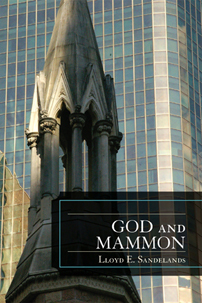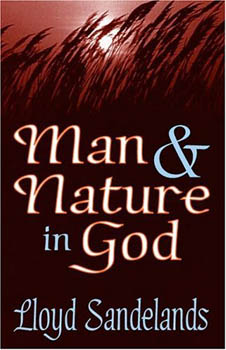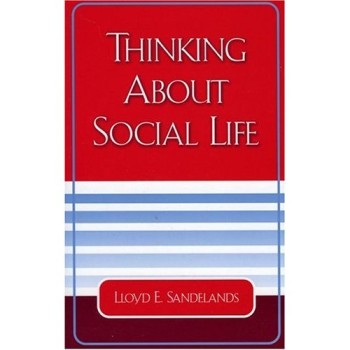
Paperback: December 2009 |
Synopsis
In many parts of today's global economy, the moral foundations of society are being tested by a business culture that is given to the good of business owners,
rather than the good of the human person and society. The widening gulf between business economics and ethics begs for a vigorous response informed by what is
best in the human spirit. This places a responsibility upon business people that calls to faith for perspective. God and Mammon discusses the ages-old, but
ever-new conflict between God and Mammon in business. These seven chapters speak of the need for God in business today. Together, the chapters of this book
build toward a comprehensive ethic of business administration. God and Mammon finds that business today needs to serve the human person, who is a creative
being in the image of God. |

Hardcover: June 2007 |
Synopsis
Drawing on his expertise in organizations and social life, Professor Sandelands explores the
rationality of human existance, through a comparative persective. As an underlying premise of
the book, Professor Sandelands establishes that science itself is a faith on its own that
requires us to believe in uncertainty. As a subtle critique of the contemporary social science
literature, the book shines when he explores normative values of faith and social science, the
latter of which does not offer "how man should live." This book, along with "Man and Nature in
God" are excellent books that serves as a much-needed balance to the predominantly faithless academia. |

Hardcover: November 2004 |
Synopsis
Contemporary American life is tinged with dissatisfaction.
Increased wealth and comfort and technological advances have not made individuals happier or society more companionable.
Today Americans marry later or not at all, and they fail at marriage as often as they succeed. Man and Nature in God is a
story of contemporary American decadence, a grim tale of our flagging relation to nature, a tale confirmed at the center of our
sexual lives. Sandelands grounds his critique in a modern philosophical error. We have conflated a particular metaphysical outlook
- the subjective standpoint of science - with our relationship, as humans, to nature. We fail to see that however much we may
learn about nature by treating it as object to our subject, we cannot in this way learn what we most want and most need to know
about nature and about ourselves. Answers to such questions as "How are we related to nature?" and "How are we to think and act
truly in nature" continue to elude us. Cast as ideology by the "isms" of humanism, naturalism, and mongrel postmodernism, today's
subjective standpoint has turned the question of truth into a question of politics. The unhappy result has been and continues to be... |

Hardcover: July 2001 |
Synopsis
Sex is a theoretical puzzle because it is much older than we are (oh really). A primary fact of biology, sex has defined society from nearly
the beginning of life on earth, and as a result we cannot see its effects in our lives in evolutionary comparisons with near primate
or mammalian relatives (if you believe in evolution). Sex is a puzzle, too, because it is often misconstrued in social science. It is not, as many social
scientists believe, a mere feature of a person, like hair or skin color. Rather it is a part played in the life of the species.
This propensity to view sex as a personal feature has kept social science from seeing how sex figures in the social life of the
species. Male and Female in Social Life presents a theoretical framework to describe how sex (the division of our species between
male and female) brings life and order to society. It argues that sex is the mainspring of social life and it tells us the most
about social dynamics and forms. The book centers on five chapters that describe four "moments" of human social life. Following
an introduction, chapter 2 begins with the first moment of social life - unity of the species. Chapter 3 examines the second
moment of social life - division of the species. |

Paperback: January 1998 |
Synopsis
Despite the significant contributions of Durkheim, Freud, Kroeber, Mead, Asch, Giddens, and others, social science remains
uncertain about its founding idea of society. There is little certainty about what, if anything, is created when people come
together in a romantic pair, a family, a club, a work team, a business corporation, or a nation state, which only leads to
important philosophical problems for social scientists and practitioners. Feeling and Form in Social Life shows how a vigorous
and practical science of society can be built. Drawing in part from the philosophy of Susanne Langer, Lloyd Sandelands reveals
human societies to be forms of life known intuitively as feelings of a whole rather than as observed interactions of persons.
These feelings, which are personal and subjective, are made public and objective by the uniquely human capacity for artistic
abstraction. Through art, people turn invisible feelings and forms of society into visible objects and performances that can be
shared and studied scientifically. The book brings this idea of society to life with diverse examples of social feelings and forms
expressed in a stadium chant, folk dance, gift ritual, tree symbols, photograph, and organization chart. Sandelands concludes
with a powerful discussion of the implications of this idea for expanding the scope of social science and for resolving its
persistent underlying confusions.
Reviews
"Marvelously argued, this book presents a fundamental challenge to much of contemporary social science."
- Mayer N. Zald, University of Michigan
"Sandelands' is a wonderfully creative and challenging thesis, virtually a prolegomenon for new forms of
inquiry into organized social life. The rich and sensitive blending of social science, philosophy, history
and art places it in a class of its own, and will give rebirth to intuition and the senses in understanding our lives together."- Kenneth J. Gergen, Swarthmore College, author of Realities and Relationships.
"Sandelands' writing is lively, his observation of social relations is sympathetic, and his pursuit of
understanding is infectious. Students will be drawn not just to the ideas of sociology and anthropology,
but to a sense of why these fields matter."- Craig Calhoun, New York University
"I sat next to Lance in 10th grade algebra. He didn't seem so smart to me then. But his sister was good looking."
- Harry Schneider, former next-door neighbor of Lloyd Sandelands
|



